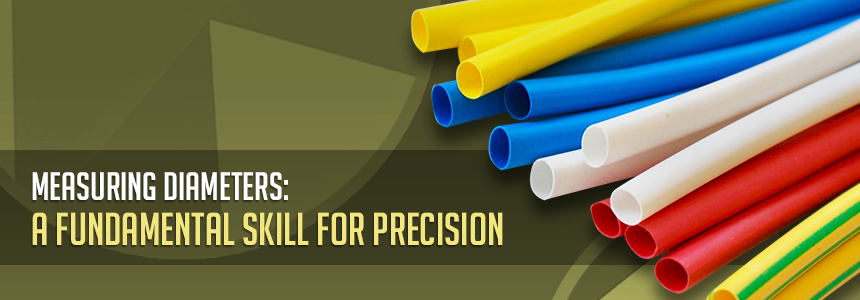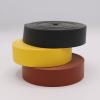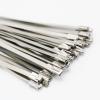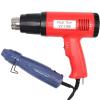
The ability to measure diameters accurately is a fundamental skill with far-reaching applications across various fields. Whether you're engaged in construction, engineering, DIY projects, or even scientific research, understanding how to measure diameters correctly is essential for achieving precision in your work. In this comprehensive guide, we'll delve into the art of measuring diameters, with a particular focus on heat shrink tubing. Additionally, we'll explore different scenarios where measuring diameters plays a crucial role, equipping you with the knowledge and techniques needed to excel in your projects. Let's begin by mastering the fundamentals of measuring diameters.
How to Measure Diameter of Heat Shrink Tubing
Heat shrink tubing is commonly used in electrical and electronic applications and comes in various sizes to suit different applications. Understanding how to measure its diameter accurately is crucial, as selecting the right size ensures a snug fit and optimal performance. Follow these steps to measure the diameter of heat shrink tubing:
Step 1: Gather Your Tools
To measure the diameter of heat shrink tubing, you'll need a few essential tools:
- Vernier calipers or a micrometer
- The heat shrink tubing you want to measure
Step 2: Prepare the Heat Shrink Tubing
Lay the heat shrink tubing flat on a clean and even surface. Ensure it's not stretched or compressed.
Step 3: Use Vernier Calipers or a Micrometer
- Open the vernier calipers or micrometer and set them to measure the outside diameter.
- Gently insert the measuring jaws around the heat shrink tubing, making sure they are perpendicular to the tubing's axis.
- Apply slight pressure to the calipers or micrometer to snugly fit them around the tubing without deforming it.
Step 4: Read the Measurement
The reading displayed on the vernier calipers or micrometer gives you the outside diameter of the heat shrink tubing.
Understanding Different Sizes of Heat Shrink Tubing
Heat shrink tubing is available in a range of sizes, typically specified in inches or millimeters. It's essential to select the correct heatshrink tubing size to ensure a proper fit for your application. When purchasing heat shrink tubing, you may encounter terms such as "expanded diameter" and "shrunk diameter."
- Expanded Diameter: This refers to the diameter of the tubing before heat is applied, when it's in its expanded state. It's essential to choose an expanded diameter slightly larger than the object or wire you intend to cover.
- Shrunk Diameter: After applying heat, the tubing shrinks to its final size, known as the shrunk diameter. This size should match or slightly compress around the object for a secure and insulated fit.
By understanding these sizing specifications, you can confidently select the right heat shrink tubing for your specific needs.
Measuring Diameter in Various Applications
While we've covered how to measure the diameter of heat shrink tubing in detail, understanding these techniques is valuable when dealing with diameters in other scenarios.
Measuring Pipe Diameter
Measuring the diameter of pipes, whether they're PVC, metal, or any other type of tubing, is essential for various applications, such as plumbing and construction. To measure pipe diameter, use a tape measure or ruler to find the circumference and then calculate the diameter.
Measuring Circle Diameter
In geometry, measuring the diameter of a circle is a fundamental concept. It's done by placing a ruler or tape measure across the center of the circle. This measurement is crucial for calculating the circle's area and circumference.
Measuring Tree Diameter
Foresters and ecologists measure the diameter of trees to assess their health, age, and growth rate. They typically use a diameter tape or tree caliper, but a standard tape measure and string can also work. The diameter of the tree is used to calculate its basal area and volume.
Measuring Bolt Diameter
When working with bolts, especially in construction and mechanics, knowing the diameter is crucial for selecting the correct nuts and washers. To measure bolt diameter, use vernier calipers or a micrometer to directly measure the bolt's width.
Measuring Wheel Diameter
In the automotive industry, measuring the diameter of wheels is essential for selecting the right tires. Wheel diameter can be measured using a tape measure or ruler by finding the distance from one edge of the wheel to the opposite edge through its center.
Measuring PVC Pipe Diameter
For plumbing and DIY projects involving PVC pipes, correctly measuring the diameter ensures compatibility with fittings and connectors. To measure PVC pipe diameter, use a tape measure or ruler to determine the circumference and then calculate the diameter.
Conclusion
Measuring diameters is a versatile skill that empowers individuals across various fields to achieve precision and accuracy in their work. Whether you're working with heat shrink tubing, pipes, circles, trees, bolts, wheels, or PVC pipes, understanding the techniques for measuring diameters is invaluable. By mastering these methods, you equip yourself to tackle a wide range of projects with confidence and ensure that your measurements are consistently precise.








